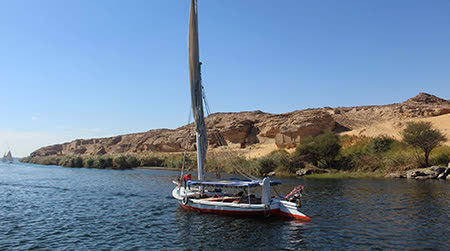“The last wonder of the ancient world”
Giza is the third largest city in Egypt. It is located on the west bank of the Nile river, around 20 km southwest of central Cairo. Giza is most famous as the location of the Giza Plateau: the site of some of the most impressive ancient monuments in the world, including a complex of ancient Egyptian royal mortuary and sacred structures, including the Great Sphinx, the Great Pyramid of Giza, and a number of other large pyramids and temples. Giza, sometimes spelt Gizah,
Giza is most famous as the location of the Giza Plateau: the site of some of the most impressive ancient monuments in the world, including a complex of ancient Egyptian royal mortuary and sacred structures, including the Great Sphinx, the Great Pyramid of Giza, and a number of other large pyramids and temples.
The Great Pyramid of Giza at one time was advocated (1884) as the location for the Prime Meridian, a reference point used for determining a base longitude.
The Great Pyramids
Located some 10 miles southwest of downtown Cairo, on the edge of a desert plateau, the three Great Pyramids of Giza rise up majestically. Shrouded in an aura of mystery, there are many myths surrounding them.
The Great Pyramids were built by pharaohs of the Fourth Dynasty (Cheops, Chephren and Mycerinus). The precise construction techniques used by the ancient builders of the pyramids are still much debated, and there are no documents to shed any light. One current theory is that they were built with overlapping ramps that were extended and raised as the pyramid rose higher. A recent research suggests that the enormous limestone blocks of the body of the pyramid were quarried locally on the Giza plateau itself, and then dragged to the construction site by teams of laborers using huge wooden sledges. The blocks were subsequently covered with a casing (long since lost) of harder limestone slabs, mostly taken from the quarry at Tura, on the opposite bank of the Nile.
The Great Pyramid of Cheops is the only one of the Seven Wonders of the Ancient World to have survived to the present day. It ranked as the tallest structure on earth for over 43 centuries. This pyramid, the most colossal ever built, is 460 feet in height and was built from 7.7 million tons of stone; its base covers an area of 12 acres.
The Great Sphinx
Was carved over 4,500 years ago. It was for the Pharaoh Khafre. It had his head, the body of a lion. The Sphinx was carved out of a huge big stone. It is guarding Khafre’s pyramid. The Sphinx was covered by sand which preserved it all these years. Its body is extremely soft rock and its head is very strong rock. The Sphinx, which embodies the body of a lion and the head of a pharaoh, is believed to be the head of Khafre and his guardian spirit for his entire burial complex. Carved from the natural limestone of Giza, the sphinx has disintegrated over the years, entire pieces dropping off to the desert floor below. It is not known to have chambers inside, like those found in the pyramids at Giza.
The Sun Boat
It is situated to the south of the great Pyramid. And was built to contain the Solar Boat of the great king Cheops. The museum is a humidity-controlled pavilion, containing a 43-metre long boat. The boat, made entirely of cedar wood, is over 120 feet long and is about 40 tons displacement. There are many suggestions about the function of the solar boats; first it was used for the soul of the dead accompanied the sun on its eternal journey in the heavens around the world, so a boat or at least a model of a boat was included in every tomb. Moreover; it was used in religious events like pilgrimages and transporting the statue of a god. The arguments are about whether this boat was purely symbolic – part of the burial goods – or whether it was actually used in the funeral procession to transport the body of the king by river to his pyramid complex.













